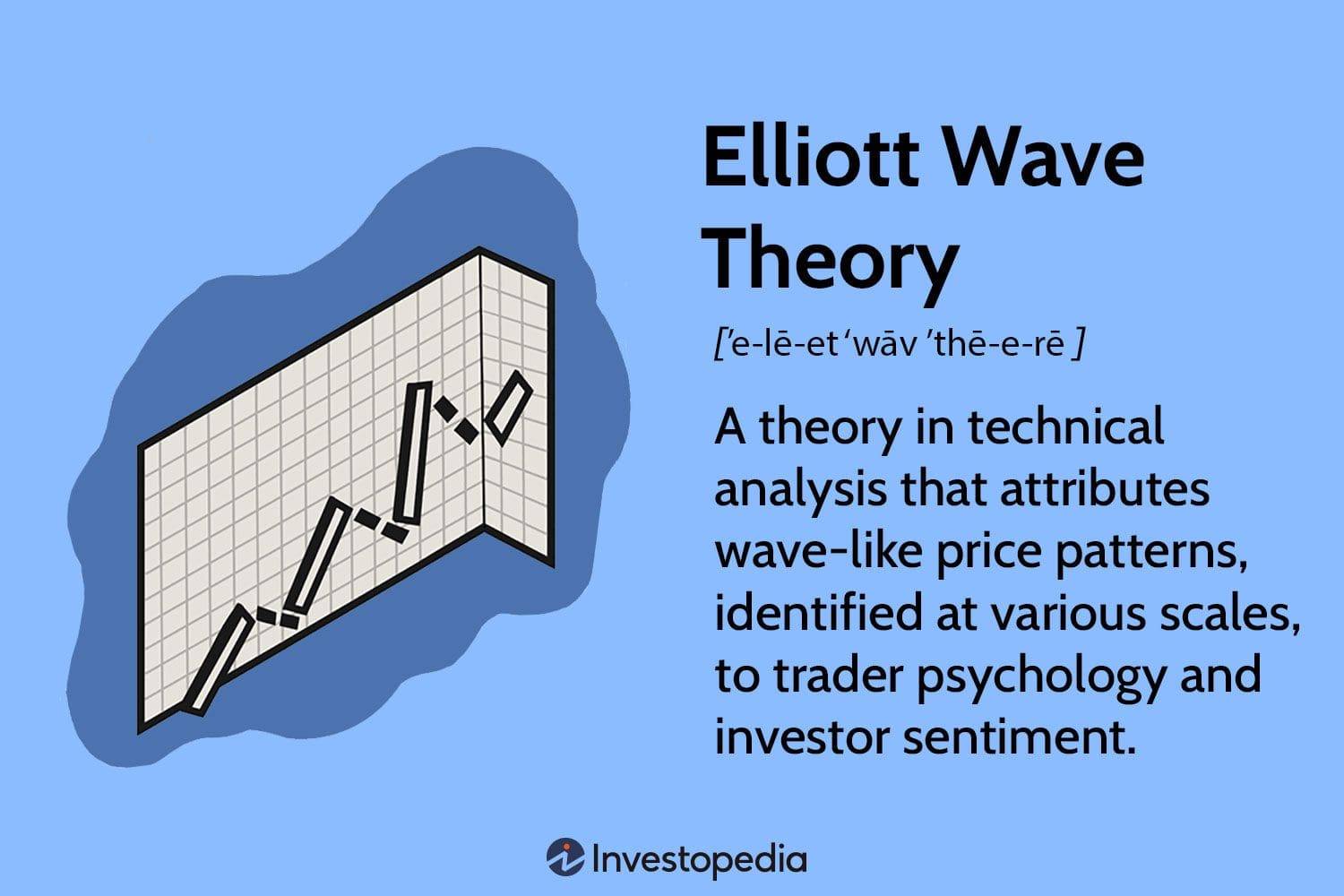What is a Applied Elliott Wave Theory for Cheap?
What is the Elliott Wave Theory?
The Elliott Wave Theory is a technical analysis technique developed by American accountant and author Ralph Nelson Elliott in the 1930s. Elliott studied several years of stock market data across various indices and was the first to predict a stock market bottom in 1935. Since then, the theory’s become a reliable tool for various portfolio managers across the world. Elliott waves are used with other technical analysis techniques to predict market movements and trading opportunities.
The Elliott Wave Theory suggests that stock price movements can be reasonably predicted by studying price history as the markets move in wave-like patterns driven by investor sentiment. Like ocean waves, the movements are repetitive, rhythmic, and timely. Moreover, the wave patterns are not seen as certain to occur in the markets; they only provide a probable scenario of stock price behavior.
Summary
- Elliott waves are used in technical analysis to determine price movements. Elliott’s Wave Theory mainly comprises two kinds of waves – motive (impulse waves) and corrective waves.
- A motive wave consists of five waves – three impulse waves and two retrace waves.
- A corrective wave consists of three waves – A, B, and C. Waves A and C are impulse waves, while Wave B is a retrace wave.
- Real-world markets often exhibit three-wave motive trends instead of five-wave motive trends.
Motive and Corrective Waves
Elliott’s Wave Theory mainly comprises two kinds of waves – motive (impulse waves) and corrective waves. Impulse or motive waves are movements that occur in the direction of a trend. On the other hand, corrective waves occur in a direction opposite to the ongoing trend. The diagram below clearly illustrates the movements of Elliott waves.
Let’s assume that we are in a bull market. In other words, one motive wave is driving the stock price up. One motive wave comprises five waves – 1, 2, 3, 4, and 5. Waves 1, 3, and 5 are impulsive in nature as they move the stock price in a particular direction (here, upwards, but even downward stock movement can constitute an impulse wave). Wave 2 is a smaller downward movement after wave 1, and wave 4 is a smaller downward movement after wave 3. The smaller downward movements after impulse waves are called retrace waves.
Furthermore, impulse waves (1, 3, and 5) are each divided into five waves. On observation, one can notice that waves 1, 3, and 5 comprise smaller upward and downward movements that, upon counting, amount to five waves. The movements are identified as ((i)), ((ii)), ((iii)), ((iv)), and ((v)).
On the other hand, retrace waves (2 and 4) are broken up into upward and downward movements of three waves, represented by ((a)), ((b)), and ((c)).
Put together, waves 1, 2, 3, 4, and 5 make up a single motive wave.
A corrective wave will take the stock price down. The correction occurs in three waves – A, B, and C. Waves A and C are made up of five waves characterized by ((i)), ((ii)), ((iii)), ((iv)), and ((v)). On the other hand, Wave B is made up of three waves identified by ((a)), ((b)), and ((c)).
In a bull market, a motive wave takes the stock price upwards, while a corrective wave reverses the trend. But, in a bear market, a motive wave would take the stock price down, and a corrective wave will take the stock price up. Therefore, in a bear market, the Elliott waves diagram shown above will be inverted. It will consist of five waves (1, 2, 3, 4, and 5) taking the price down and three waves (A, B, and C) taking the price up.
 SAMPLE:
SAMPLE:
 SAMPLE:
SAMPLE:
 SAMPLE:
SAMPLE:
Use a FREE VPN. if the video isn’t working.
Applied Elliott Wave Theory Index:
📁 Applied Elliott Wave Theory Module 1 The Basic Waves (28files – 658 MB)
📄 01 Introduction Waves and What is a Wave..flv (37.59 MB)
📄 01 Introduction Waves and What is a Wave..pdf (81.72 KB)
📄 02 Modes of Development, Basic and Full Market Cycle..flv (29.30 MB)
📄 02 Modes of Development, Basic and Full Market Cycle..pdf (90.34 KB)
📄 03 Motive Waves, Impulses..flv (20.38 MB)
📄 03 Motive Waves, Impulses..pdf (75.00 KB)
📄 04 Leading Diagonal, Ending Diagonal..flv (22.52 MB)
📄 04 Leading Diagonal, Ending Diagonal..pdf (77.98 KB)
📄 05 Corrective Waves, Zig Zag, Double Zig Zag..flv (23.73 MB)
📄 05 Corrective Waves, Zig Zag, Double Zig Zag..pdf (458.81 KB)
📄 06 Flats, Double Threes andTriangles..flv (51.58 MB)
📄 06 Flats, Double Threes andTriangles.pdf (83.58 KB)
📄 07 Wave Pattern Rules, Impulses..flv (65.74 MB)
📄 07 Wave Pattern Rules, Impulses..pdf (535.24 KB)
📄 08 Leading Diagonals..flv (40.10 MB)
📄 08 Leading Diagonals.pdf (64.76 KB)
📄 09 Ending Diagonals..flv (50.47 MB)
📄 09 Ending Diagonals.pdf (56.87 KB)
📄 10 Zig Zag, Double Zig Zags..flv (107.99 MB)
📄 10 Zig Zag, Double Zig Zags.pdf (69.27 KB)
📄 11 Flats and Double Threes..flv (66.41 MB)
📄 11 Flats and Double Threes.pdf (70.11 KB)
📄 12 Triangles, Corrective Combinations, Rare Patterns..flv (80.28 MB)
📄 12 Triangles, Corrective Combinations, Rare Patterns..pdf (81.83 KB)
📄 13 Extensions, Alternations and Truncation..flv (26.15 MB)
📄 13 Extensions, Alternations and Truncation.pdf (84.58 KB)
📄 14 Channeling and Fibonacci, Module Wrap up..flv (34.56 MB)
📄 14 Channeling and Fibonacci, Module Wrap up..pdf (86.48 KB)
📁 Applied Elliott Wave Theory Module 2 Trend Reversal (16Files – 546MB)
📄 01 Internals of Market Structure.flv (17.16 MB)
📄 02 Trend, Counter Trend And Trend Change.flv (20.71 MB)
📄 03 A Motive Wave Cannot Stand Alone!.flv (32.27 MB)
📄 04 Trend Change Combinations.flv (11.83 MB)
📄 05 Impulse – Impulse.flv (13.26 MB)
📄 05a Impulse – Impulse Down Pattern Blaster.flv (34.04 MB)
📄 05b Impulse – Impulse Up Pattern Blaster.flv (33.98 MB)
📄 06 Ending Diagonal-Impulse.flv (21.60 MB)
📄 06a Ending Diagonal-Impulse Down Pattern Blaster.flv (35.05 MB)
📄 06b Ending Diagonal-Impulse Up Pattern Blaster.flv (35.14 MB)
📄 07 Impulse Leading Diagonal.flv (22.56 MB)
📄 07a Impulse Leading Diagonal UP Pattern Blaster.flv (34.69 MB)
📄 07b Impulse Leading Diagonal DN Real Market Pattern Blaster.flv (87.93 MB)
📄 07c Impulse Leading Diagonal UP Real Market Pattern Blaster.flv (88.35 MB)
📄 08 Ending Diagonal-Leading Diagonal.flv (22.20 MB)
📄 08a Ending Diagonal-Leading Diagonal Up Patter Blaster.flv (35.64 MB)
📁 Applied Elliott Wave Theory Module 3 Trend Continuation
📄 01 Corrections.flv (11.46 MB)
📄 02 Continuation Of Motive Waves.flv (20.02 MB)
📄 02a Continuation Of Motive Waves Up Pattern Blaster 1.flv (39.37 MB)
📄 02a Continuation Of Motive Waves Up Pattern Blaster 2.flv (39.42 MB)
📄 02a Continuation Of Motive Waves Up Pattern Blaster 3.flv (39.26 MB)
📄 02a Continuation Of Motive Waves Up Pattern Blaster 4.flv (39.41 MB)
📄 02a Continuation Of Motive Waves Up Pattern Blaster 5.flv (39.13 MB)
📄 03 Impulse Continuations.flv (26.24 MB)
📄 03a Impulse Continuations Down Pattern Blaster 1.flv (38.54 MB)
📄 03b Impulse Continuations Up Pattern Blaster 1.flv (38.37 MB)
📄 03c Impulse Continuations Down Pattern Blaster 2.flv (38.71 MB)
📄 03d Impulse Continuations Up Pattern Blaster 2.flv (38.70 MB)
📄 03e Impulse Continuations Down Pattern Blaster 3.flv (38.63 MB)
📄 03f Impulse Continuations Up Pattern Blaster 3.flv (38.43 MB)
📄 03g Impulse Continuations Down Pattern Blaster 4.flv (38.50 MB)
📄 03h Impulse Continuations Up Pattern Blaster 4.flv (38.57 MB)
📄 03i Impulse Continuations Down Pattern Blaster 5.flv (38.19 MB)
📄 03j Impulse Continuations Up Pattern Blaster 5.flv (38.40 MB)
📄 04 Continuation Combination In Corrective Patterns.flv (7.42 MB)
📄 05 Zig Zag Continuation.flv (9.37 MB)
📄 06 Flat Continuation.flv (17.93 MB)
📄 07 Triangle Continuation.flv (17.71 MB)
📁 Applied Elliott Wave Theory Module 4 Retacement Levels (3 Files – 82Mb)
📄 01 Retracement levels – Classic Elliott Wave Theory !.flv (33.16 MB)
📄 02 Corrective Patterns and Retracement levels.flv (19.44 MB)
📄 03 Real Time Applications.flv (30.17 MB)
📁 Applied Elliott Wave Theory Module 5 Boomerang! (3 Files – 141Mb)
📄 01 Boomerang + Triangle.flv (40.88 MB)
📄 02 Triangle Construction.flv (47.93 MB)
📄 03 Trading The Triangle.flv (52.47 MB)
📁 Applied Elliott Wave Theory Module 6 Dawn of New long Terms (3 Files – 94Mb)
📄 01 Dawn of Long Term Trend.flv (39.98 MB)
📄 02 Leading Diagonal Construction.flv (32.91 MB)
📄 03 Trading The Leading Diagonal.flv (21.20 MB)
📁 Applied Elliott Wave Theory Module 7 End of Long Term Trends (3 Files – 74Mb)
📄 01 End of Long Term Trend.flv (29.27 MB)
📄 02 Ending Diagonal Construction.flv (29.20 MB)
📄 03 Trading The Ending Diagonal.flv (15.87 MB)
📁 Applied Elliott Wave Theory Module 8 Advanced Locksmithy (8 Files – 211Mb)
📄 01 The Triangle As Wave Two.flv (41.76 MB)
📄 02 The Short Third Wave.flv (42.44 MB)
📄 03 The X Wave Of A Double Three.flv (29.72 MB)
📄 04 The E Wave Of The Triangle.flv (29.04 MB)
📄 05 The Aew Trade Indicator.flv (14.35 MB)
📄 06 Aew Trade Indicator Construction.flv (7.11 MB)
📄 07 Aew Trade Indicator Interpretation.flv (42.37 MB)
📄 photo_2020-04-03_20-09-06.jpg (265.16 KB)
Deconstructing Motive Waves
Some general guidelines can be followed to identify a motive wave:
- Wave 2 cannot be more than 100% of Wave 1.
- Wave 3 cannot be the shortest wave of the three impulse waves (1, 3, and 5).
- The price range of Waves 1 and 4 cannot overlap.
Elliott Wave Theory Applied to Markets
In real-time markets, it was observed that a motive wave could comprise three waves instead of five. In fact, most of the time, the market will see a motive wave that is composed of three waves. It is also possible that the market keeps moving in corrective waves. Therefore, three-wave trends are more common than five-wave trends.
Use of Fibonacci Ratios in Elliott Wave Theory
The Fibonacci summation series takes 0 as the first number. The next number is obtained by adding 1 to 0. Then, the series is derived by taking the previous two numbers and adding them to obtain the next number. The Fibonacci summation series looks like 0, 1, 1, 2, 3, 5, 8, 13, 21, 34, to infinity. Fibonacci ratios are derived by dividing two Fibonacci numbers. The ratios are used to determine levels of support and resistance in the markets.
In Elliott Wave Theory, Fibonacci retracement is the use of Fibonacci ratios to determine where a correction ends so that the primary trend can begin again. Fibonacci retracements measure the depth of pullbacks in a trend. For example, Wave 2 can be 50% of the length of Wave 1.
Another widely used tool is Fibonacci extensions. Fibonacci extensions are used to determine the turning points in a primary trend. In a bull market, they indicate where a motive wave can go before a correction. In a bear market, they can be used to determine support levels. Fibonacci extensions are used to measure stock price levels at which profits can be realized.


